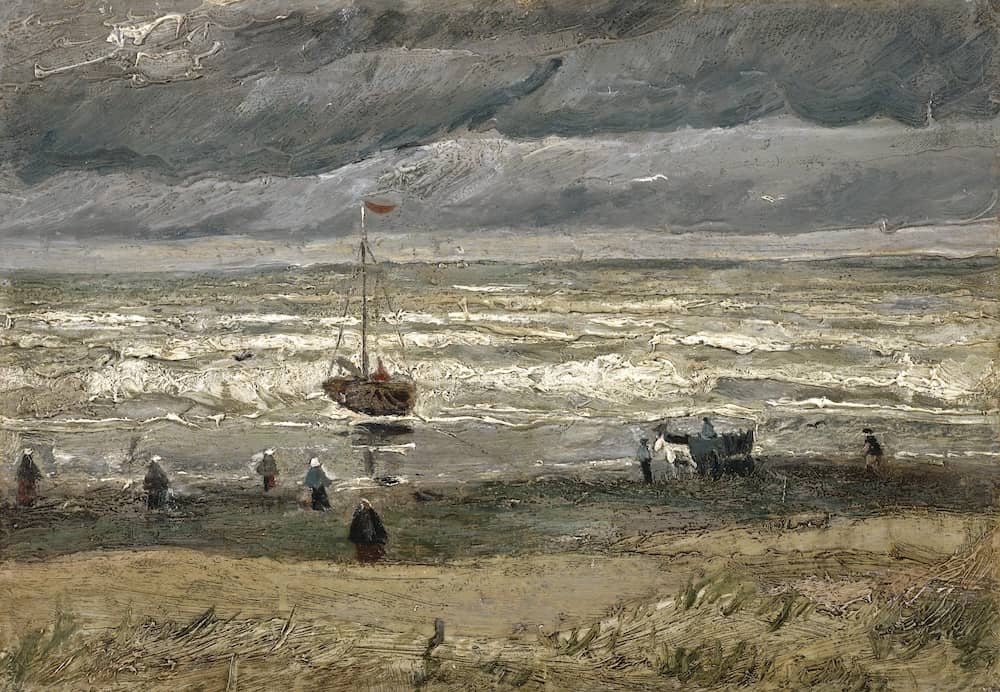Beach at Scheveningen in Stormy Weather, 1882 by Vincent van Gogh

Beach at Scheveningen in Stormy Weather was painted by Vincent van Gogh in 1882. This early painting reflects van Gogh's practice of painting outside in an effort to capture all the elements of nature.
While living in The Hague, van Gogh made regular trips to Scheveningen, a nearby fishing village. He had begun to experiment with oil paint, and he set up his easel on the bleak stretch of beach and worked directly on his canvas in the windblown sand. His strong and bold approach to the composition, using broad horizontal zones to delineate sand, water, and sky, was matched by his thick and expressive application of pigment. His compulsion to capture his observations on the spot reflects his awareness of contemporary Impressionism.
Van Gogh painted this small view of the sea using thick gobs of color and a rough brushstroke. The raging, foaming sea, the dark, thundery sky, and the boat's flag whipping in the wind all give a good impression of stormy weather. Van Gogh painted this picture on the spot, at Scheveningen, a beach resort near The Hague. He had to fight against the elements: the gusting wind and flying sand, which stuck to the wet paint. Most of this was later scraped off, but a few grains can still be found in some of the paint layers.

Beach at Scheveningen in Stormy Weather was stolen from Van Gogh Museum in Amsterdam in Dec. 7, 2002, along with another Van Gogh's painting Church of Nuenen. Two thieves used a 15-foot ladder to climb onto the museum's roof and break into the building, escaping by sliding down a rope. These two paintings were recovered by Italian police 14 years after theft.




















